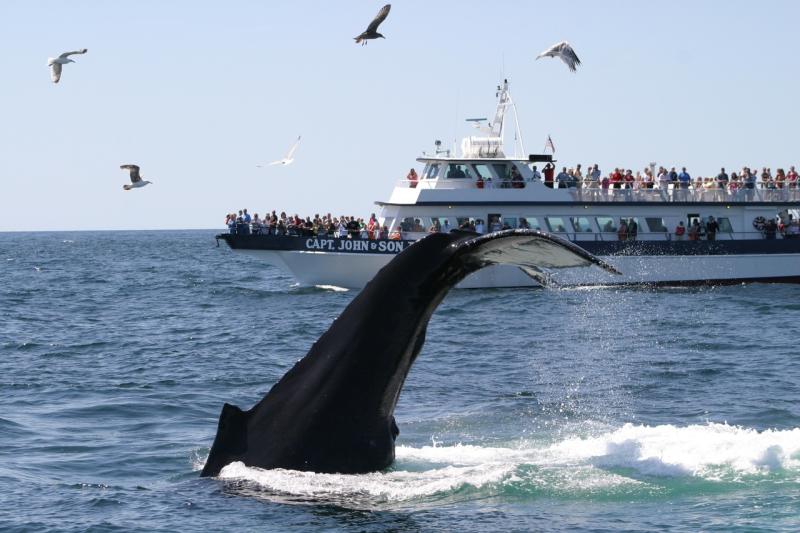Going out with whale watching tours that follow responsible guidelines is a great way to see whales in a manner that is safe and respectful for wildlife and humans, while supporting local businesses. The Whale SENSE program provides recognition for companies who follow these guidelines.

What does Whale SENSE mean?
Each whale watching company that participates in the Whale SENSE program—supported and developed by NOAA Fisheries and its long-time partner Whale and Dolphin Conservation—agrees to follow basic guidelines that help minimize disturbance to whales, alert appropriate authorities to whales in distress, and provide a safe viewing experience.
The “SENSE”-ible guidelines are:
- Stick to the regional whale watching guidelines
- Educate naturalists, captains, and passengers to have SENSE while watching whales
- Notify appropriate responders of any whales in distress
- Set an example for other boaters
- Encourage ocean stewardship
Whale SENSE acknowledges companies that are committed to responsible practices, and provides training as well as marketing materials and recognition on the Whale SENSE website so tourists can make informed decisions when selecting a tour operator.
“Our goal is an educated and respectful approach to whale watching,” said Aleria Jensen, Deputy for Protected Resources at NOAA Fisheries Alaska Regional Office, who helped to establish the program in Alaska. “We’re proud of these companies for taking a leadership role and committing to stewardship on the water.”

Gastineau Guiding. Photo: WDC
Where can you find Whale SENSE endorsed companies?
There are 23 recognized Whale SENSE tours operating along the Atlantic coast and in Juneau, Alaska. The Whale SENSE program started in 2009 with several tour operators in New England. After regional success and expansion along the Atlantic seaboard, the Atlantic program became a model for Alaska Whale SENSE, based in Juneau.
“Working directly with participating companies has allowed us to maintain a great relationship with them” said Monica Pepe of Whale and Dolphin Conservation. “We take their suggestions and feedback seriously, and as a result the program is constantly evolving to be as successful as possible.”

Captain John's boat with Pinch lobtailing. Photo: WDC
Each region has unique whale watching challenges that the Whale SENSE community of operators has helped address. Along the Atlantic coast, Whale SENSE vessels have acted as “first responders” able to spot and report entangled whales, especially endangered North Atlantic right whales. Having Whale SENSE participants stay with entangled whales until trained responders arrive to attempt disentanglement efforts is key to a successful long-term conservation strategy.
Frank DeSantis—owner and captain of American Princess Cruises in Queens, New York, and Whale SENSE participant since 2013—describes his first encounter with this rare whale. “This was our first-ever sighting of a right whale on one of our trips, and while we were devastated to learn that it was entangled, we felt fortunate to be able to document its condition and report it to the authorities. Our Whale SENSE training provided us with the tools to know what we could do to help in that situation.”
In Alaska, Juneau is a key foraging location for humpback whales, and a world-class whale watching destination. Whale SENSE Alaska was introduced in 2015 to augment NOAA’s 2001 regulations about approaching humpback whales, providing additional operational guidelines and training for viewing wildlife, and recognizing companies for participating in the program. Whale SENSE was formed in Alaska with the goal of minimizing disruption to humpbacks during critical foraging times, while still ensuring that whale watching remains a viable and sustainable enterprise.

Allen Marine Beach clean up. Photo: WDC
So whether you want to see breaching whales off Cape Cod or a killer whale in Alaska (or humpbacks on either coast), Whale SENSE tours provide safe and educational opportunities to view the whales we’ve come to know during #WhaleWeek2017!



